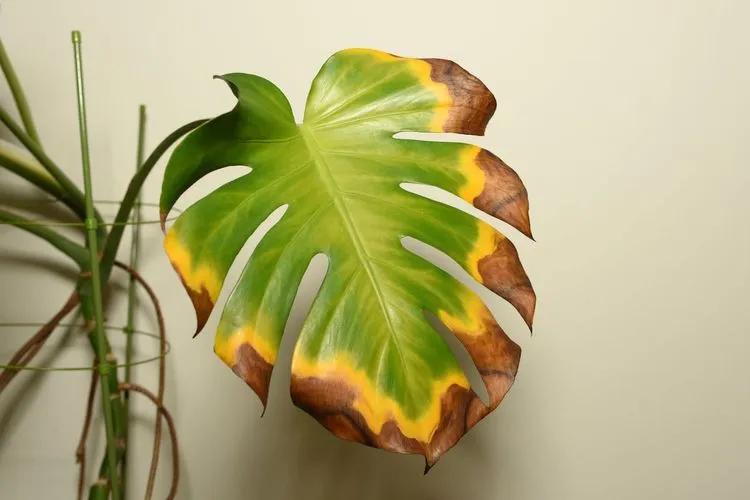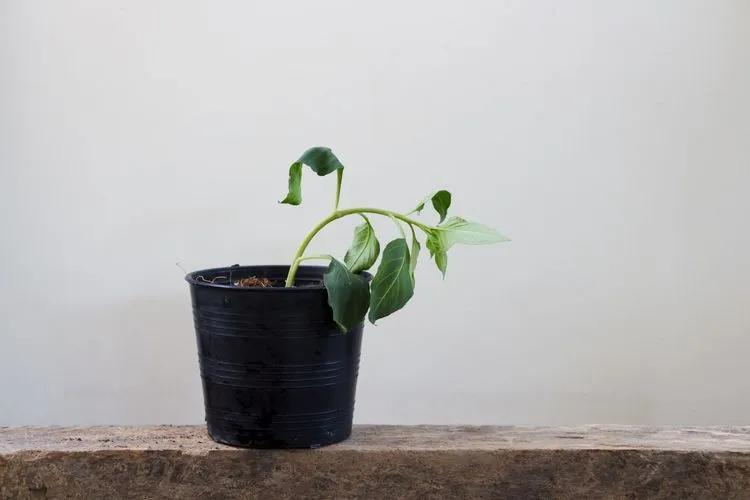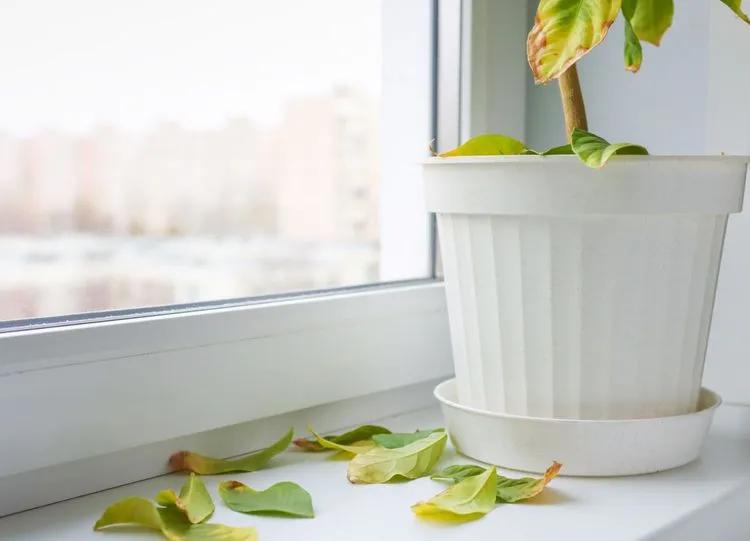As a plant parent, you definitely faced the problem related to the foliage. Plant problems are often easier to prevent than fix, but we have prepared for you a list of the most common leaf problems and how to deal with these troubles.
Brown leaves
 Browning leaves is one of the most frequent problems. In most cases, the leaves gradually acquire this color and become brittle. Do not worry if old leaves turn yellow or brown - this is a normal stage of development related to aging. However, the appearance of such symptoms in young leaves signals that something went wrong.
Browning leaves is one of the most frequent problems. In most cases, the leaves gradually acquire this color and become brittle. Do not worry if old leaves turn yellow or brown - this is a normal stage of development related to aging. However, the appearance of such symptoms in young leaves signals that something went wrong.
-
The entire leaf becomes brown. This may indicate that the plant either received too much water or, on the contrary, is overdried. In the first case, you need to check the condition of the soil and root system and, if necessary, change the substrate completely. If the reason is dry soil, spill the plant thoroughly, and in the future, make sure that it does not dry out.
-
Only part of the leaf is affected. That is a symptom of too much fertilizer or pesticide, dry soil, hot air, or low temperature. To fix this, fertilize the plant once a month and place the pot in a tray with small pebbles and water. This helps to increase humidity.
Withering
 Withering, most often, signals that the plant has been lacking all or almost all macro-and microelements for a long time. Remember that you must plant the flower in a suitable potting mix. The issue can be overcome by transplanting into new soil and using fertilizers once a month. Choose fertilizer based on the type of the plant.
Withering, most often, signals that the plant has been lacking all or almost all macro-and microelements for a long time. Remember that you must plant the flower in a suitable potting mix. The issue can be overcome by transplanting into new soil and using fertilizers once a month. Choose fertilizer based on the type of the plant.
Too moist soil can also lead to wilting of the plant and sagging leaves. As a result of overwatering, the roots cannot breathe, and they rot. If you have doubts about waterlogging, remove the plant from the pot and check the roots. If the roots are rotten or infested, cut them off and replant the plant in a new pot with drainage holes.
Falling leaves
 The periodic dropping of one or two leaves from the lower part of the stem is normal. But if the plant loses a lot of leaves, this is a worrying sign. Dropping the leaves of a houseplant in most cases is associated with improper watering. However, there are some other possible reasons:
The periodic dropping of one or two leaves from the lower part of the stem is normal. But if the plant loses a lot of leaves, this is a worrying sign. Dropping the leaves of a houseplant in most cases is associated with improper watering. However, there are some other possible reasons:
-
Sudden plant rearranging and changing growing conditions. Most often, this happens after purchasing a plant in a store. Plants experience stress, and foliage may fall off during the acclimatization period. However, if the leaves do not stop falling off after two weeks, the plant should be rearranged to another place. Subtropical and Mediterranean species need warmth in summer. At the same time, they hibernate in winter, which requires lower temperatures of 50-59°F. Camellias, for example, will never bloom without a refreshing resting period in the cold.
-
Small pot. It would be logical to conclude that a large plant requires a large pot, and a small one needs a smaller container. If a plant grows in a too-small pot, its roots suffocate and have no space to develop properly. So once a year or two, transplant your green pets into larger pots. When transplanting, do not forget to change the soil. However, note that not all plants need annual repotting, so pay attention to the preferences of your species.
-
Dry air. Usually, insufficient air humidity does not directly affect the life of plants, but everything works in a chain reaction. Due to a lack of moisture, the leaves can lose their beauty and natural appearance. One of the exceptions is succulents and cacti, for which dry air is the key to good growth. To increase the humidity, especially in winter, moisten plants once or twice a day with a sprayer. Vaporizers and water-filled bowls placed near flower pots can also help.
Anthracnose
 If yellow, pink, or brown spots, cracks, and ulcers with dark brown edges appear on the leaves, this is a manifestation of symptoms of severe fungal disease.
If yellow, pink, or brown spots, cracks, and ulcers with dark brown edges appear on the leaves, this is a manifestation of symptoms of severe fungal disease.
The causative agent of anthracnose is the fungus Colletotrichum orbiculare, which is well spread throughout the soil. The disease develops well if the humidity is very high, at high pH levels in the soil, and if the plant lacks potassium and phosphorus. In the initial stages of mild infection, it is necessary to remove the affected parts of the plant with anthracnose, and then with an interval of one and a half to three weeks, two or three times, treat it with fungicides.
The strategy for controlling leaf diseases directly depends on the cause of this phenomenon. Eliminate the unfavorable factor - and your plant will delight you only with health and growth again.
